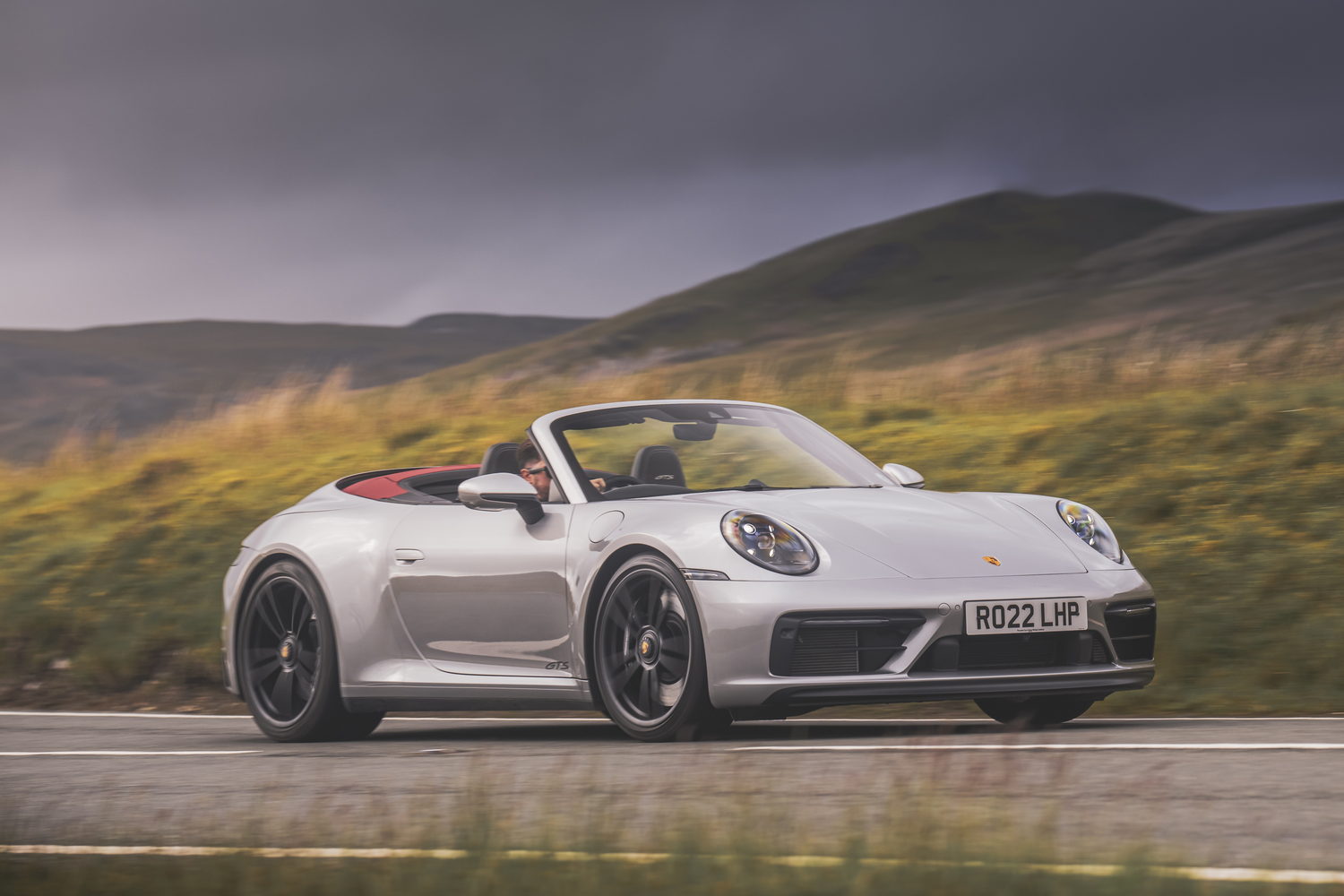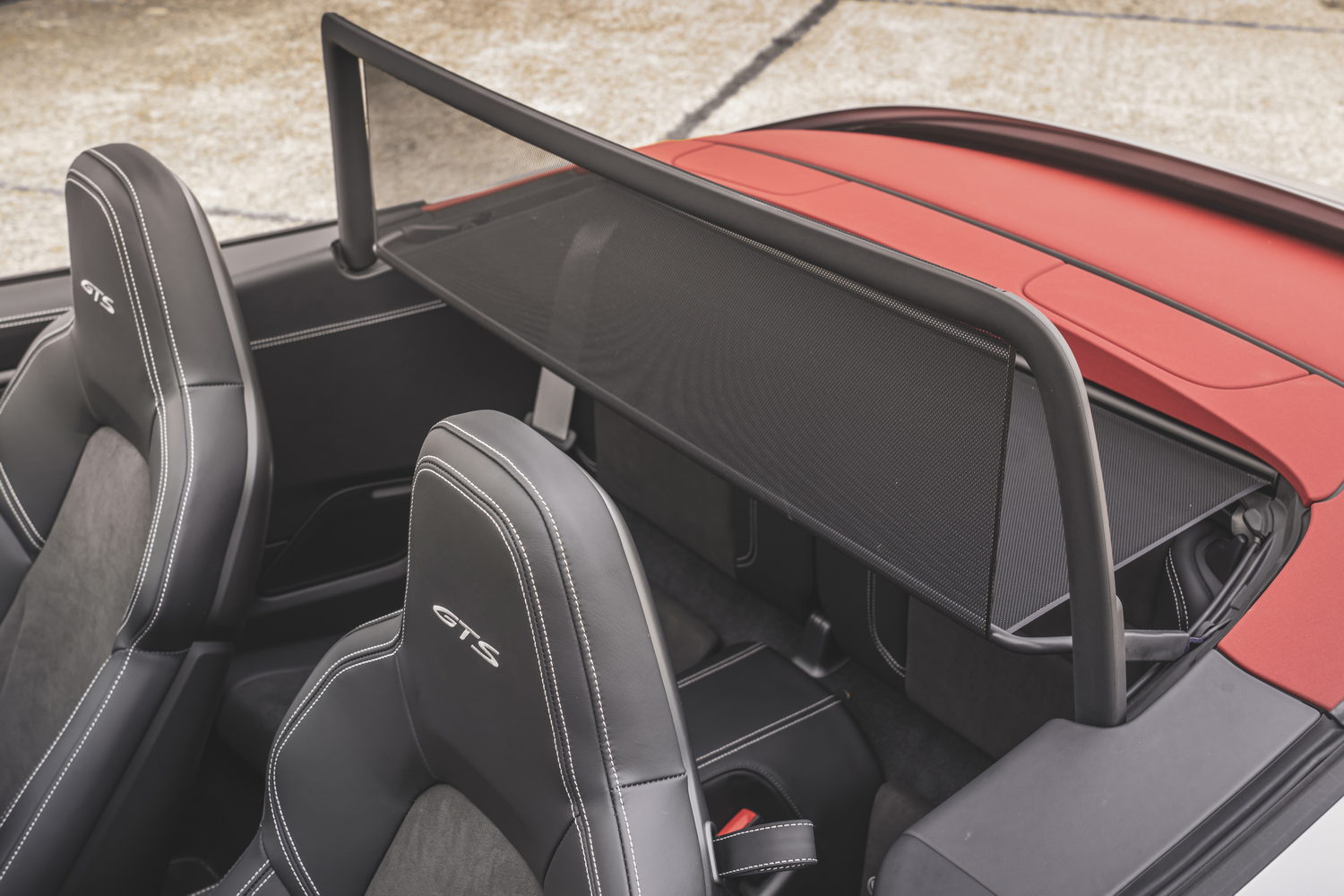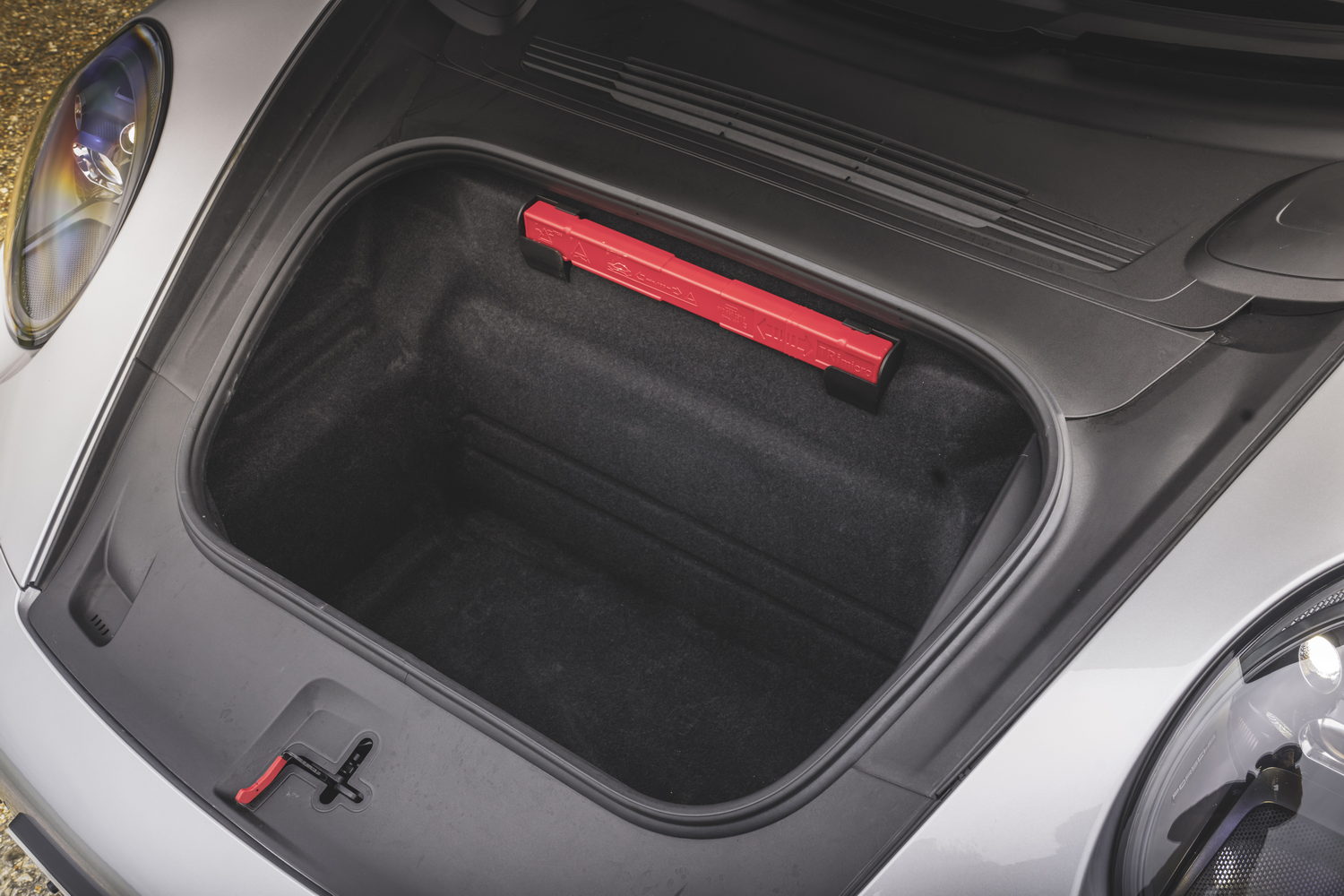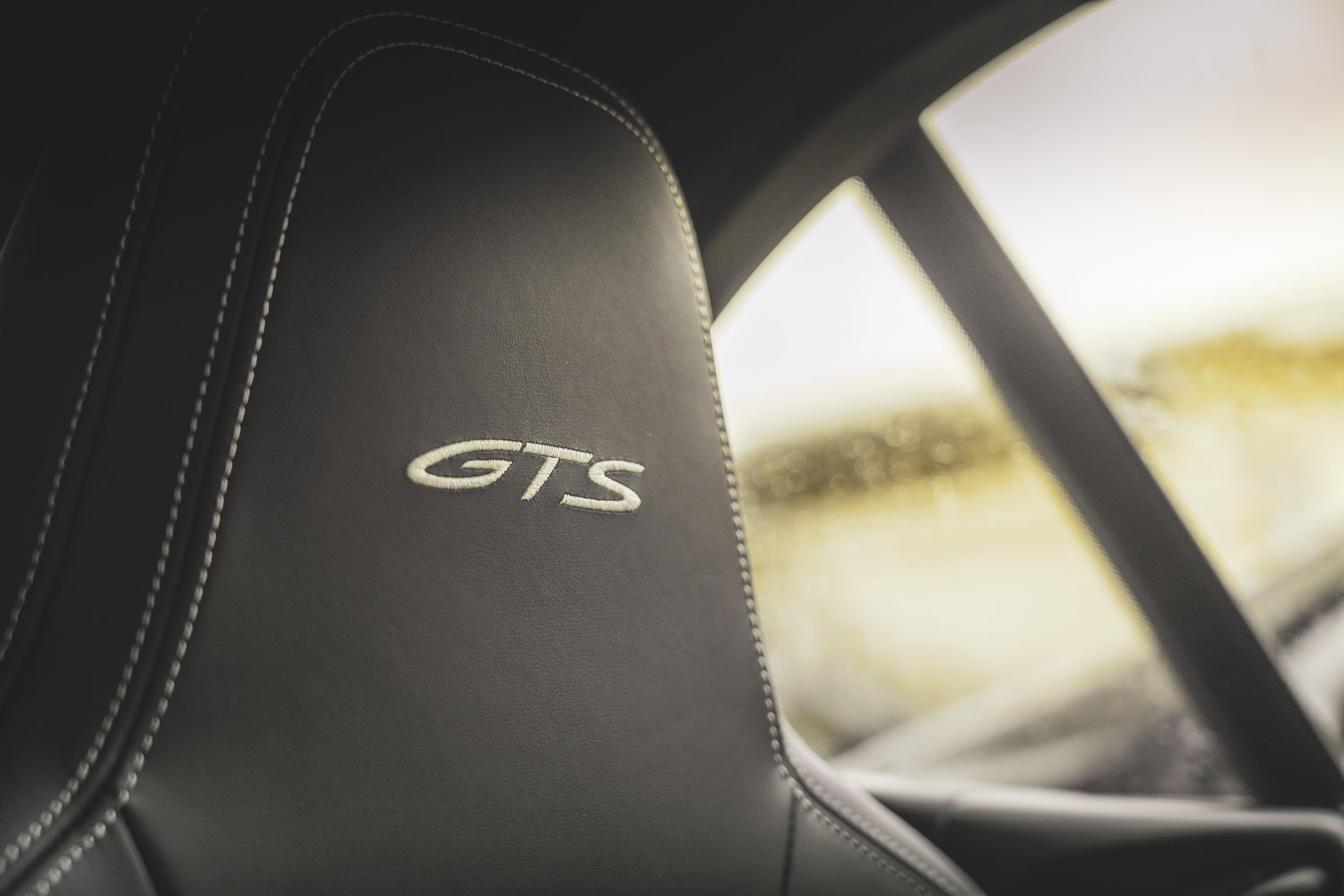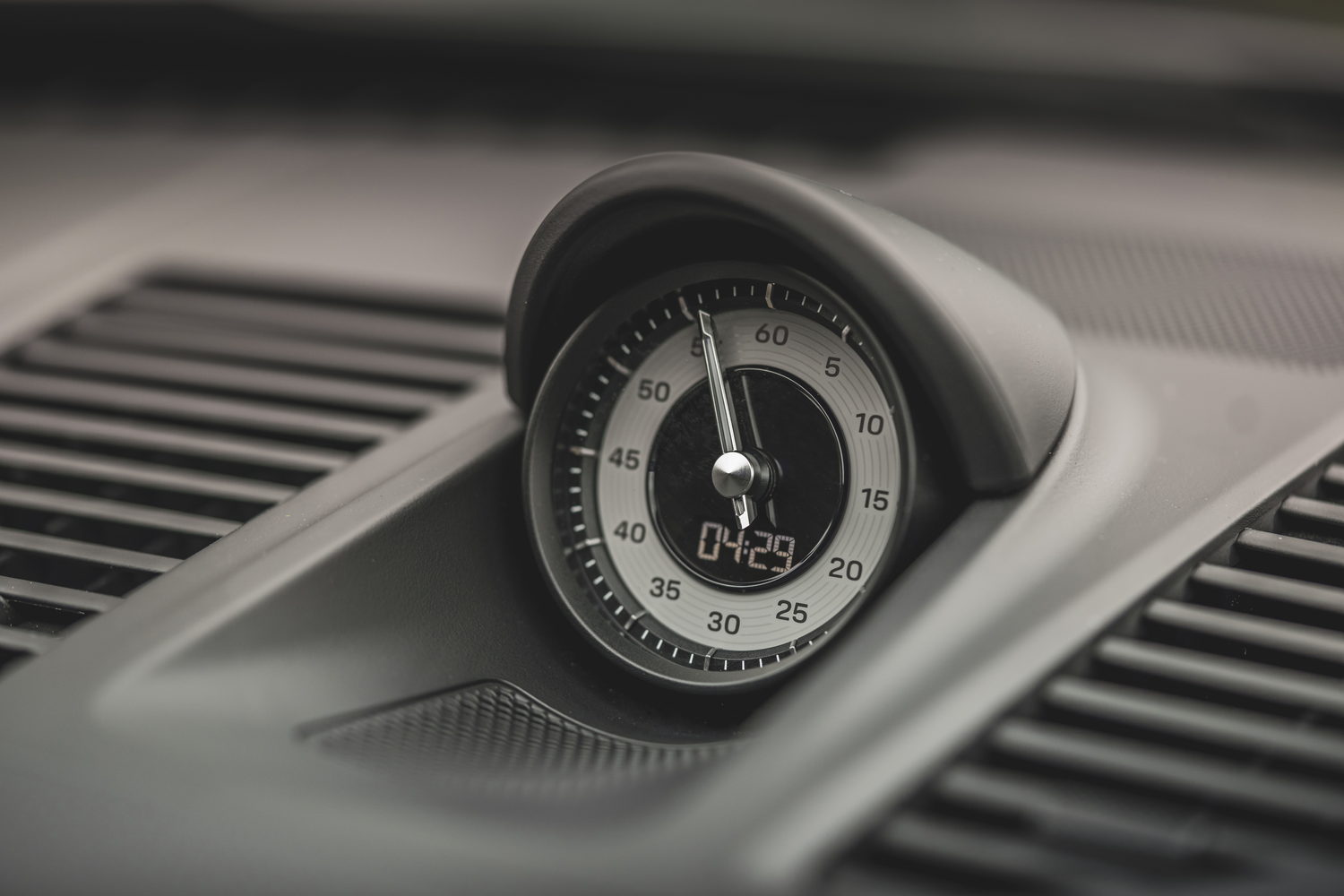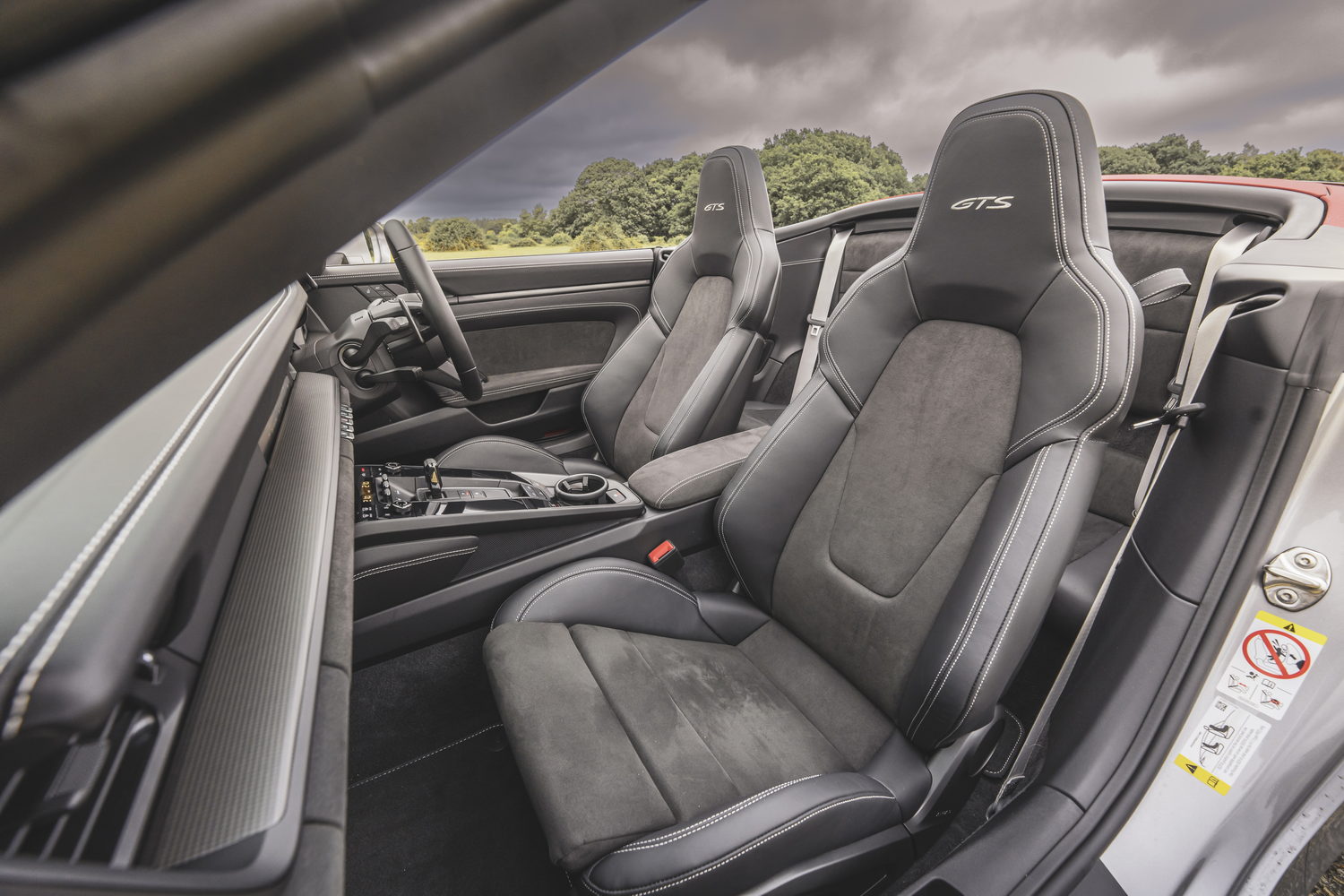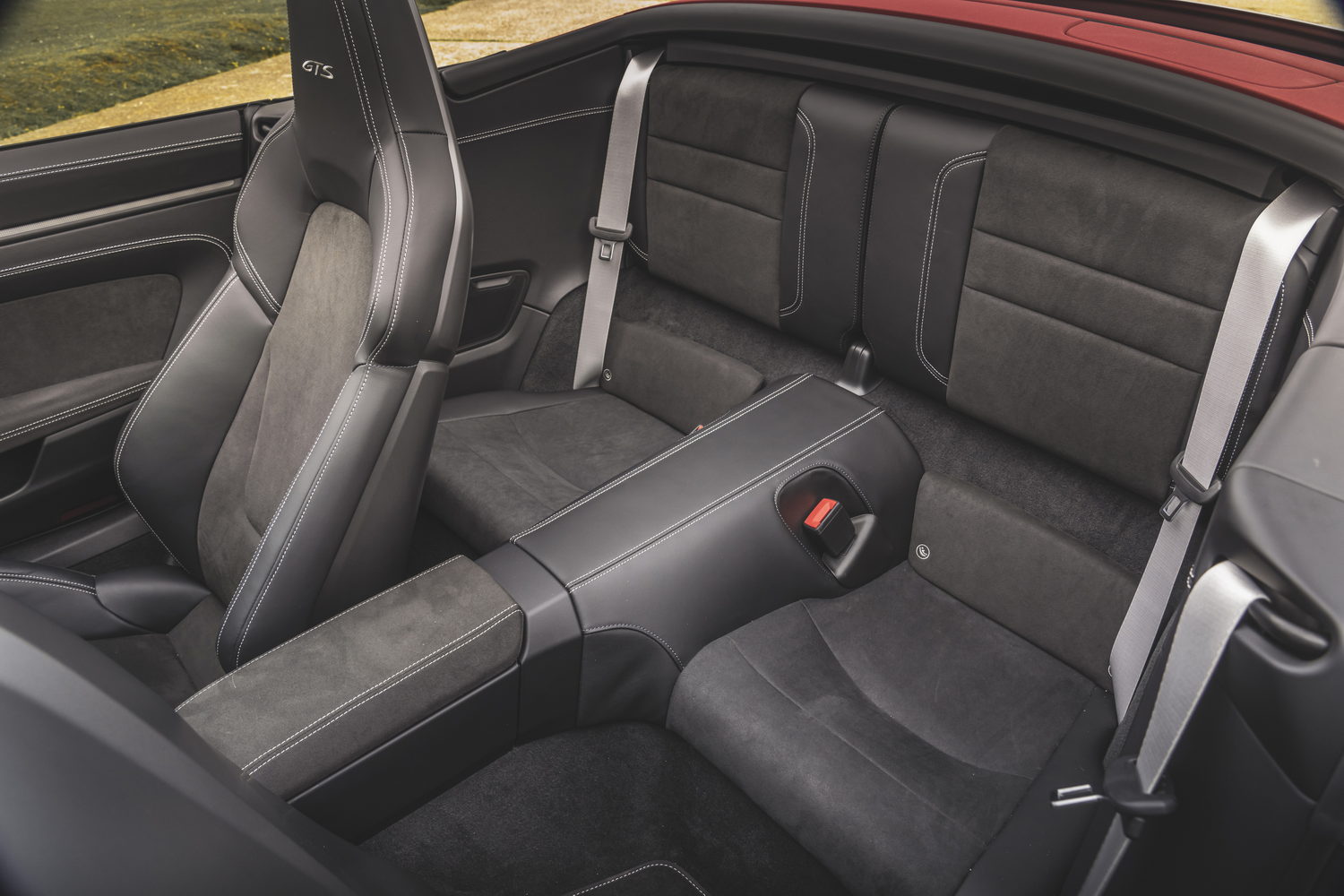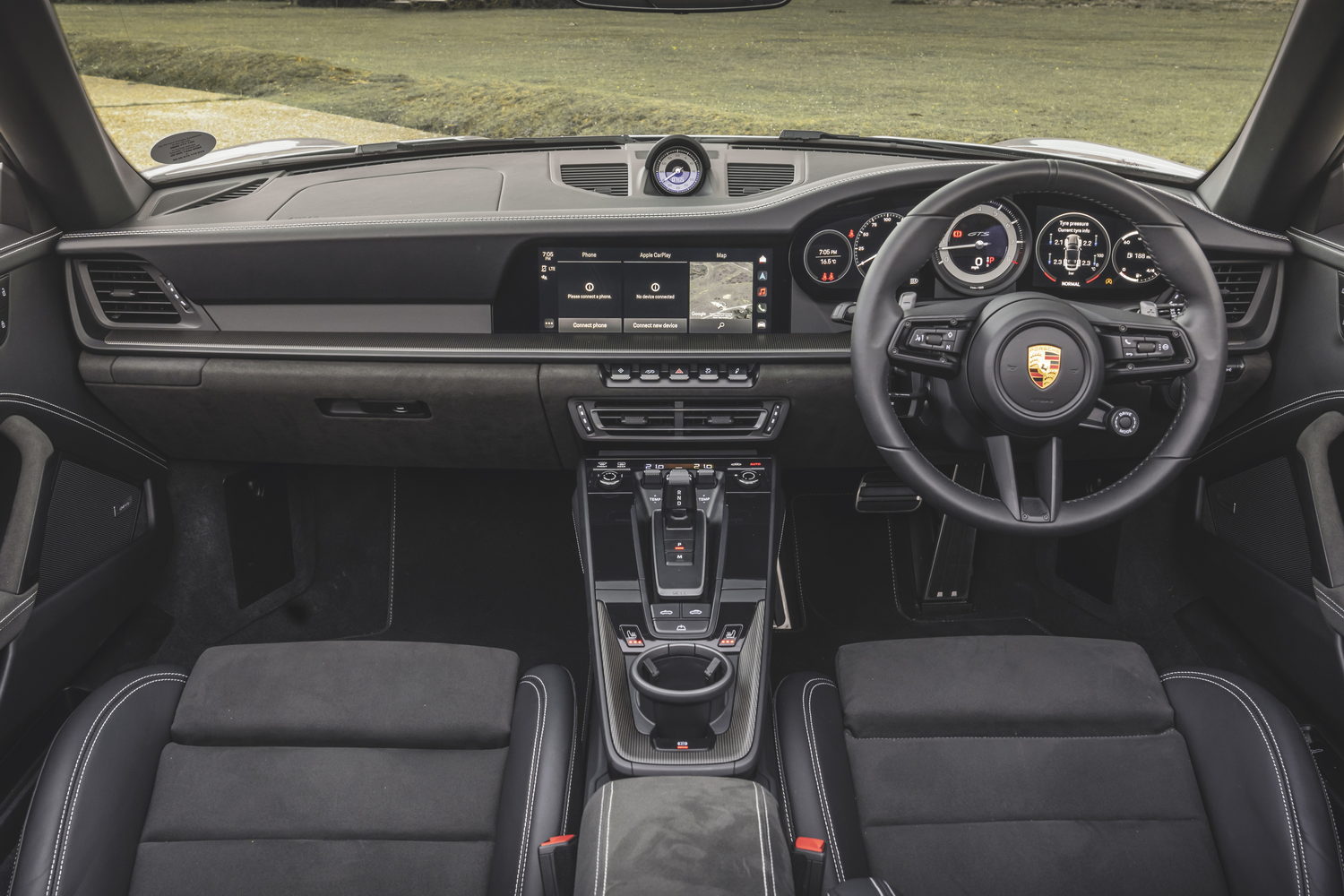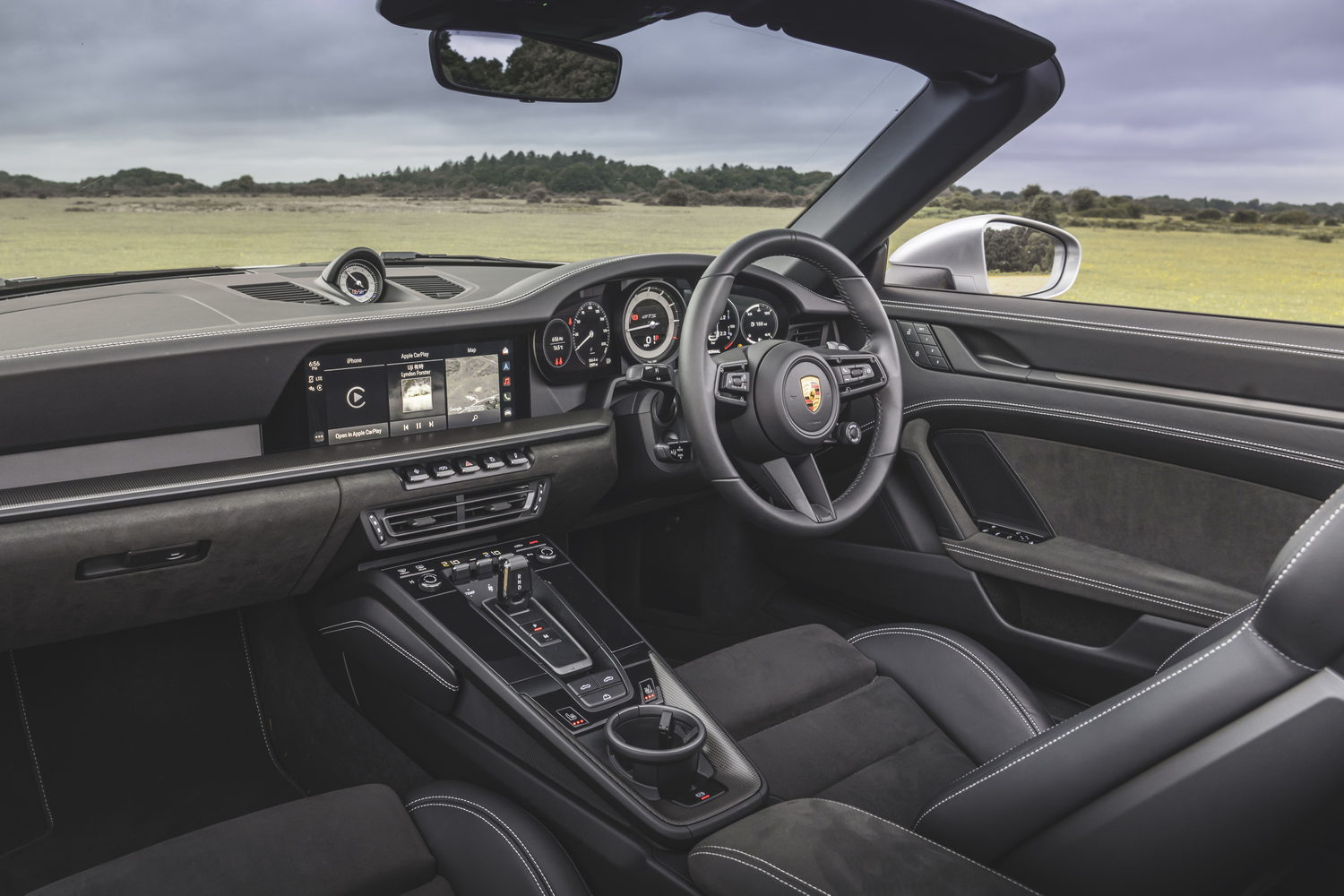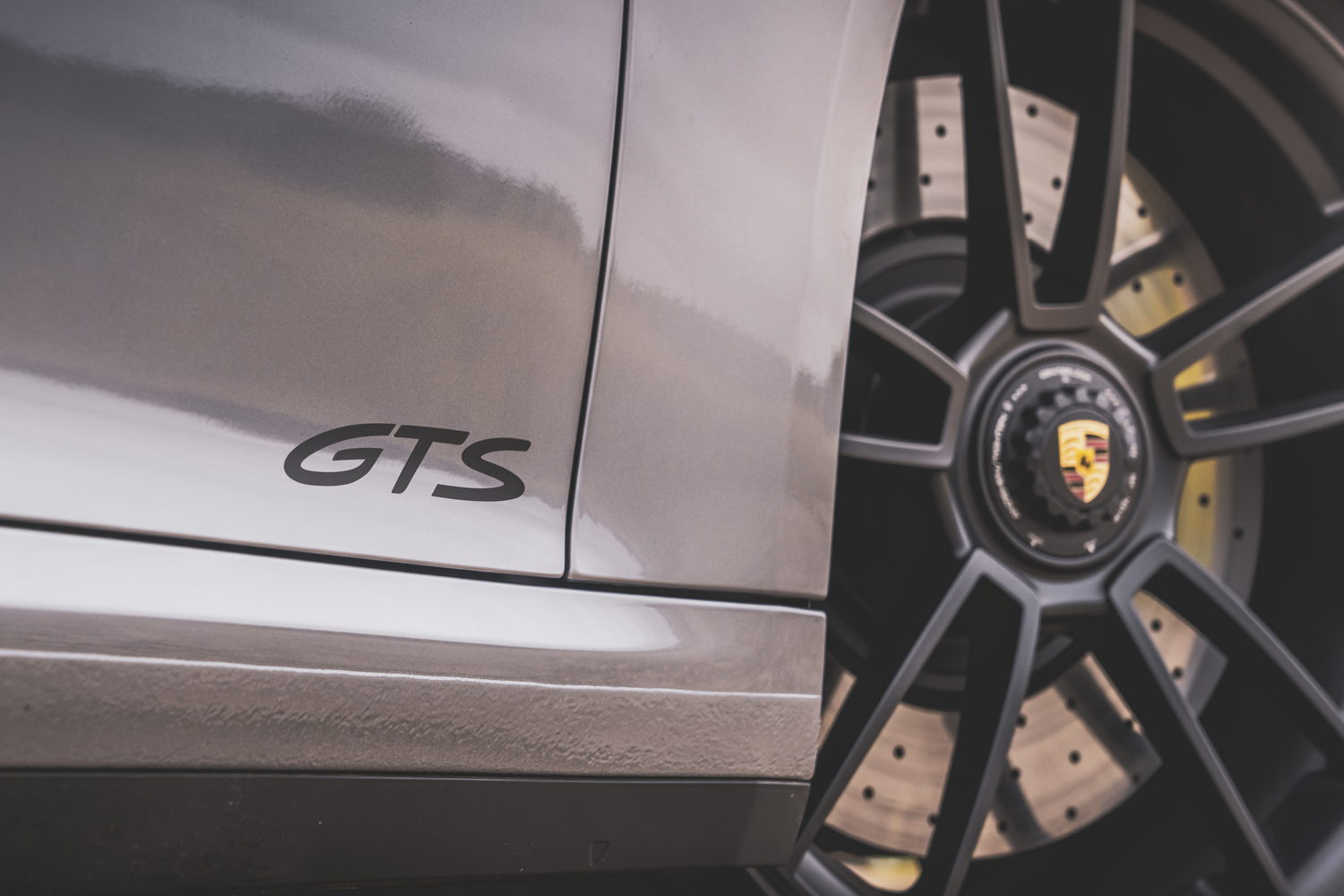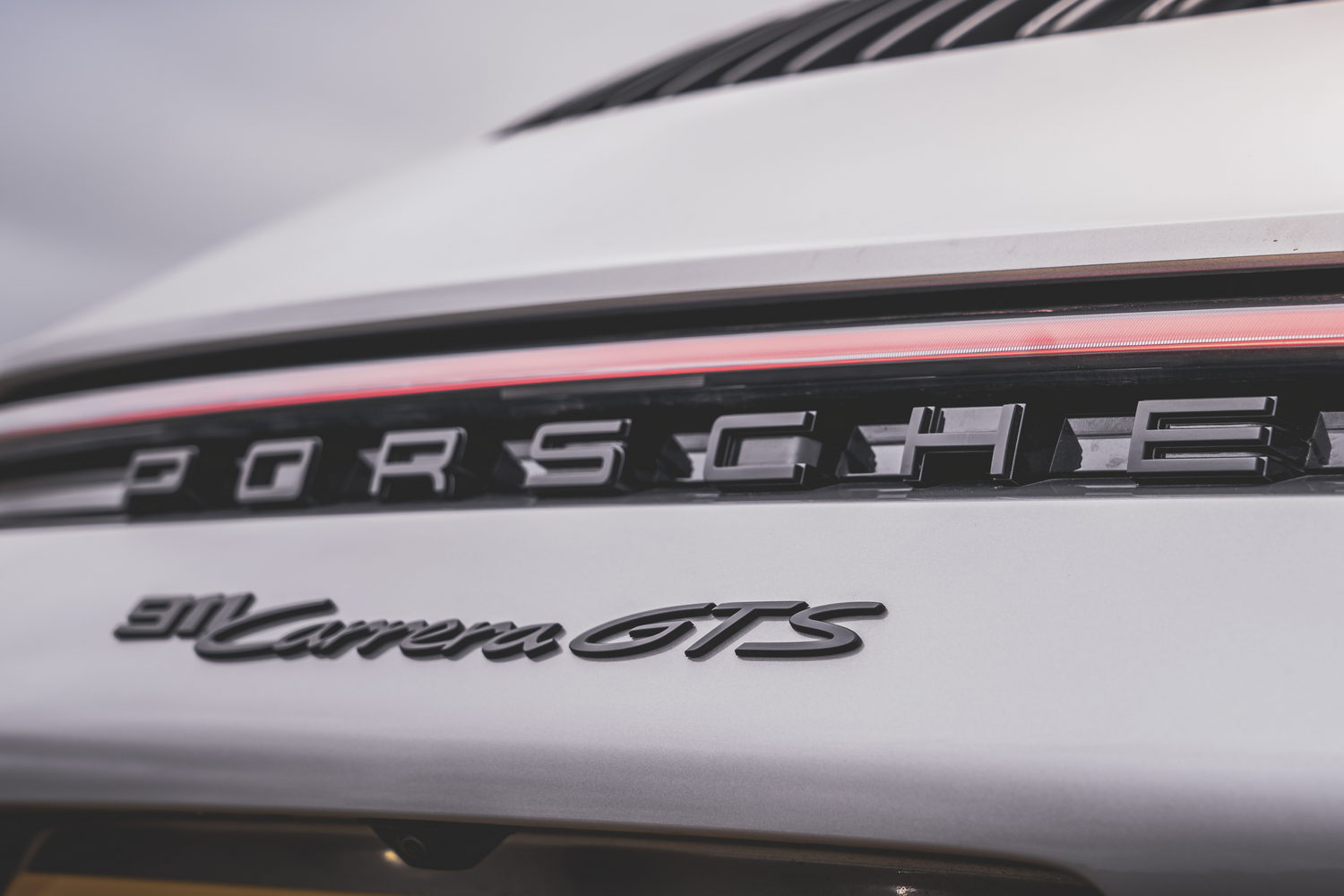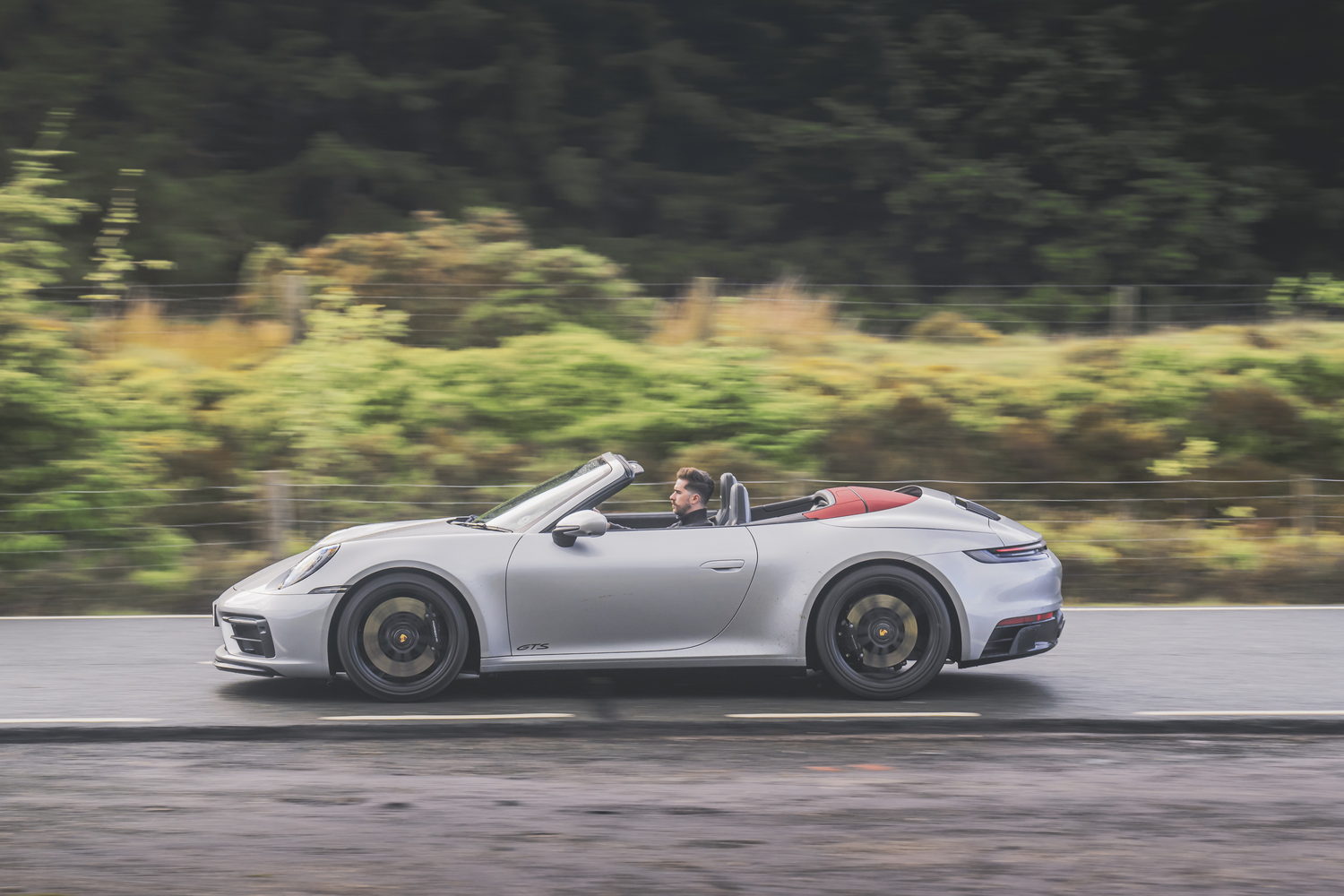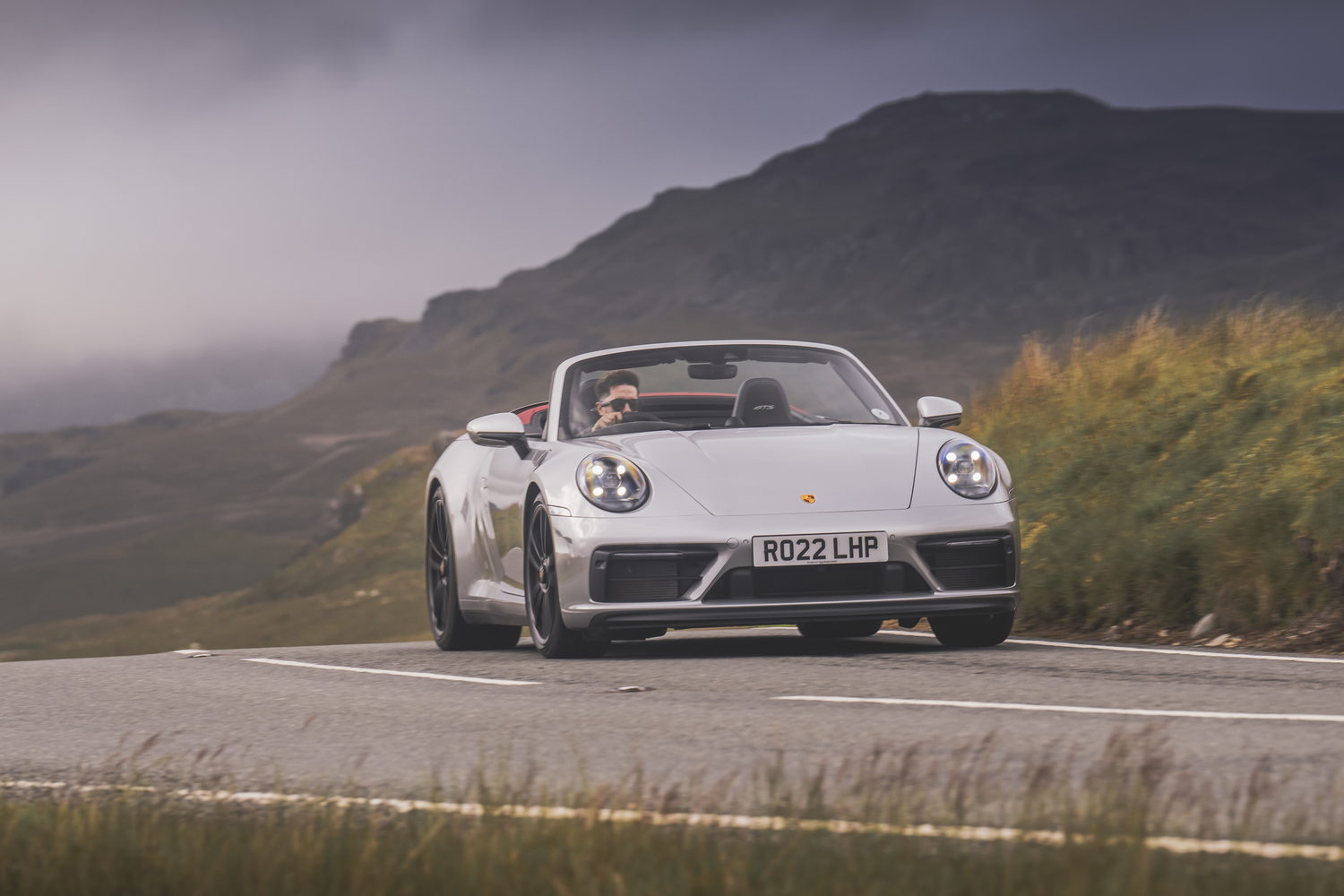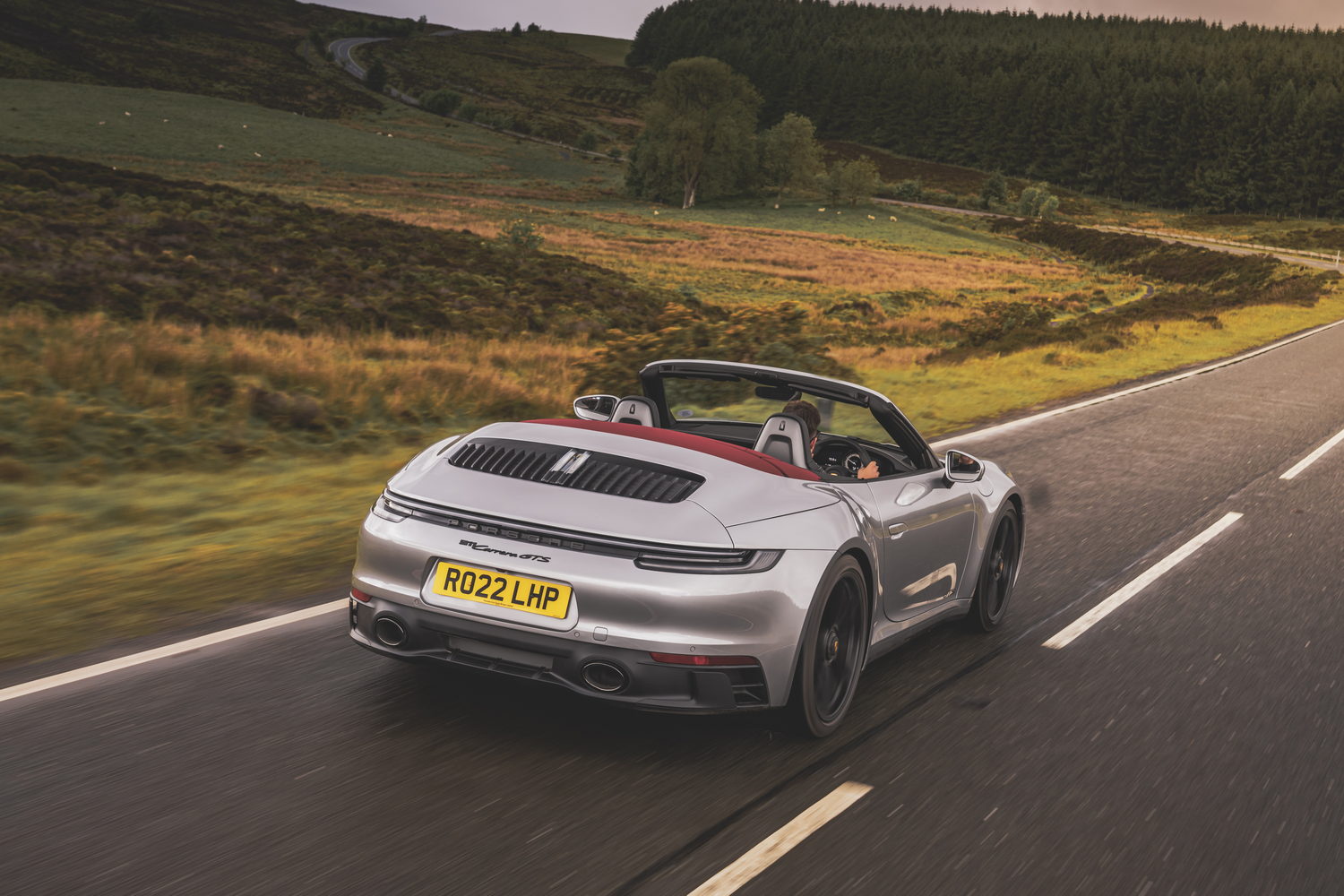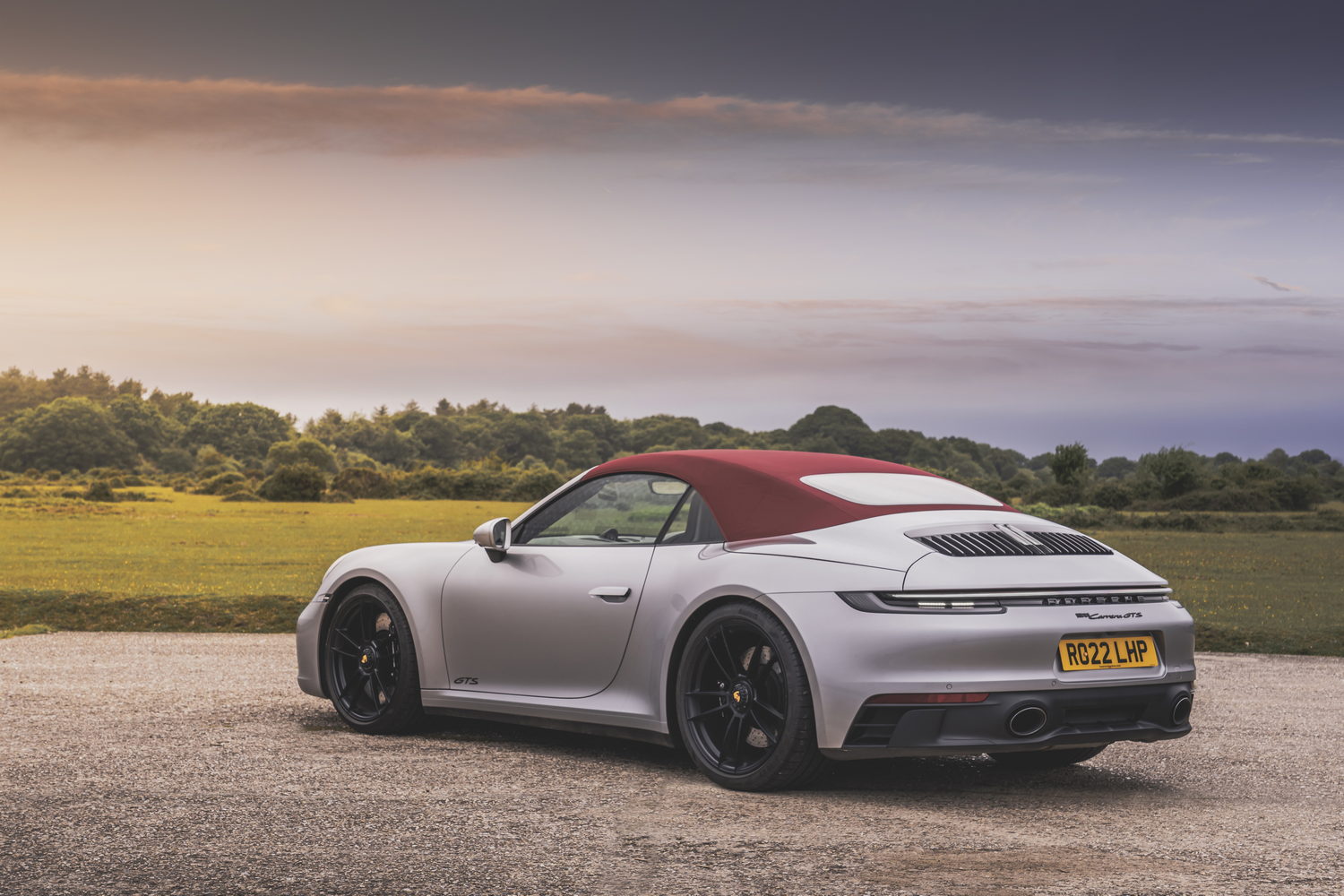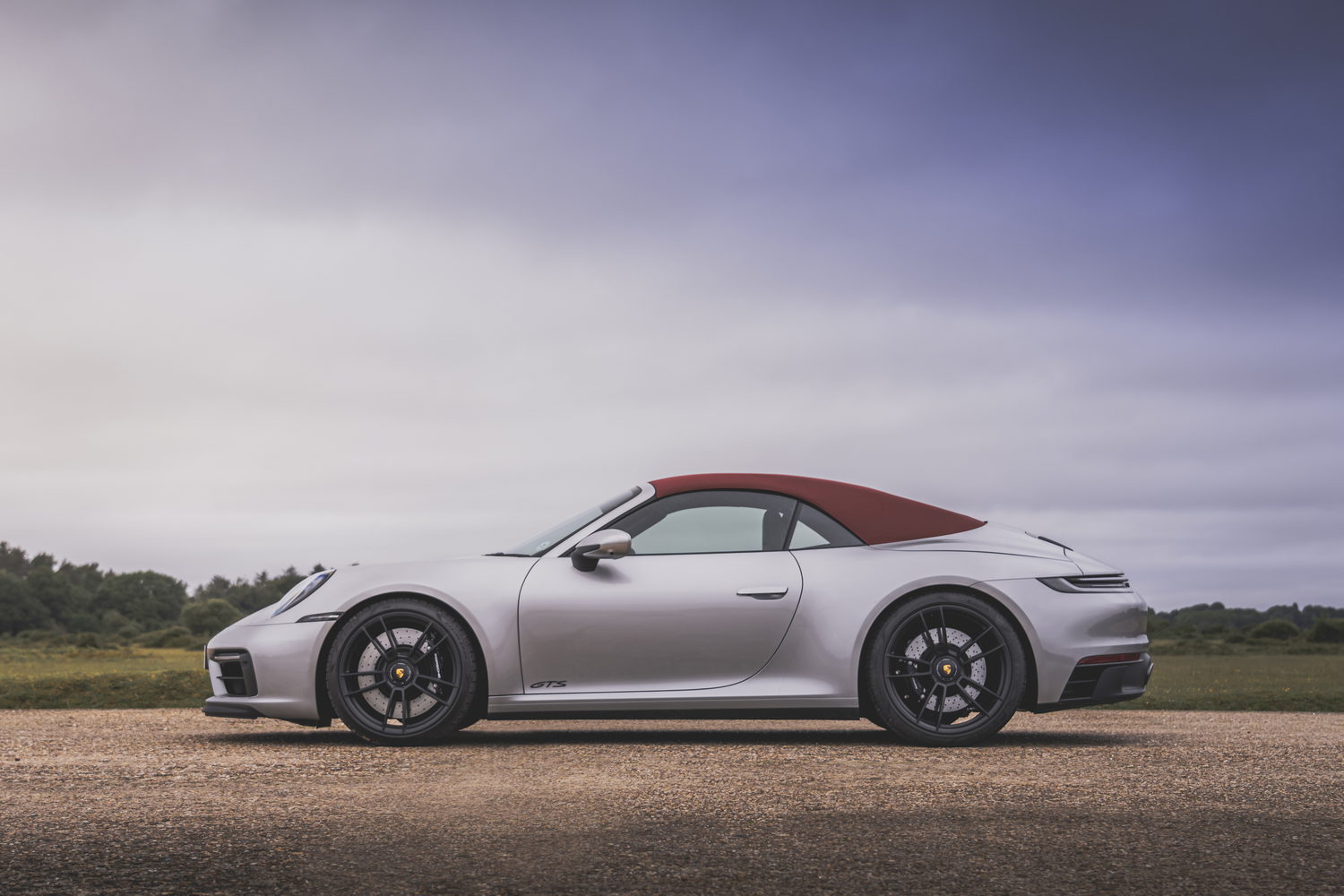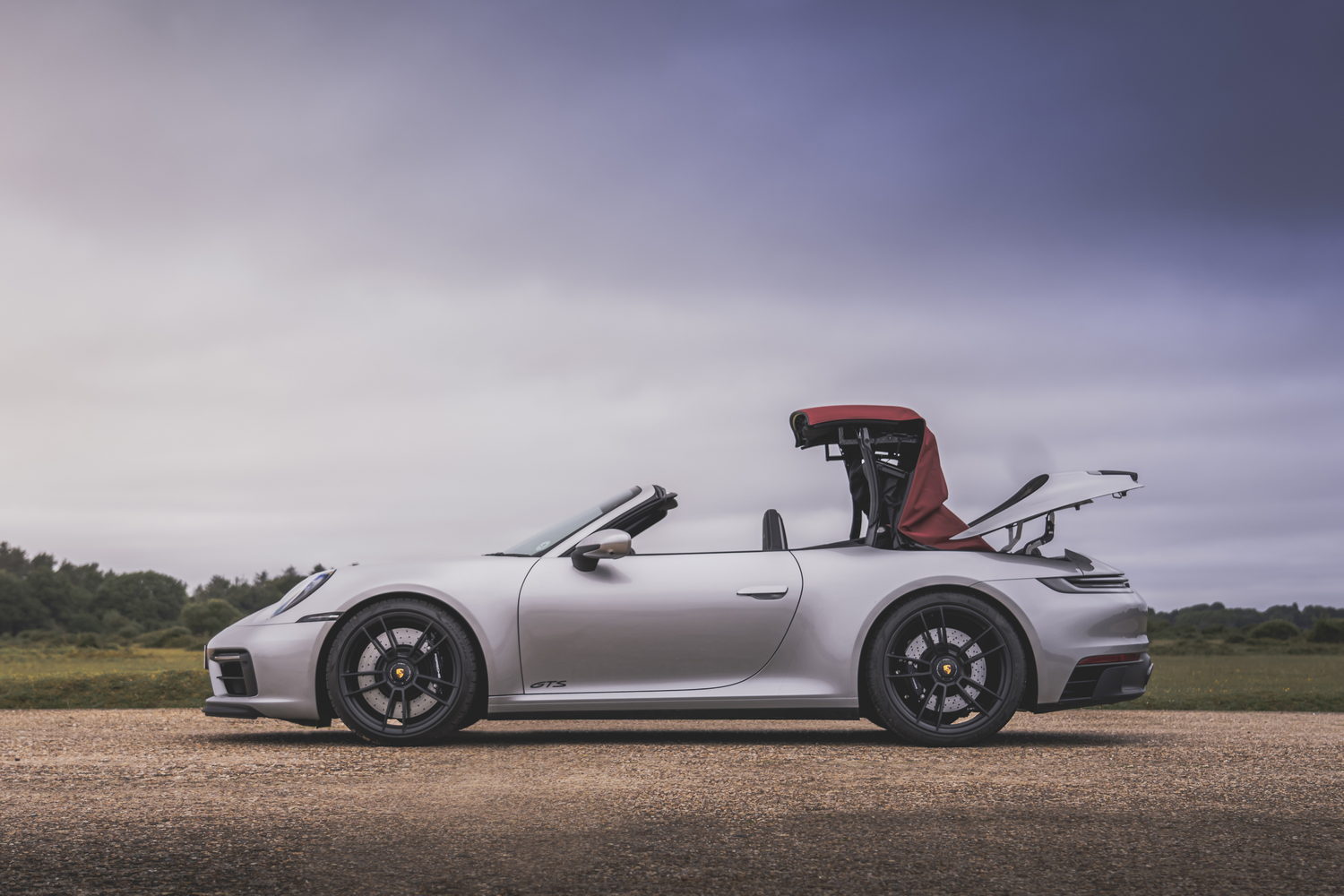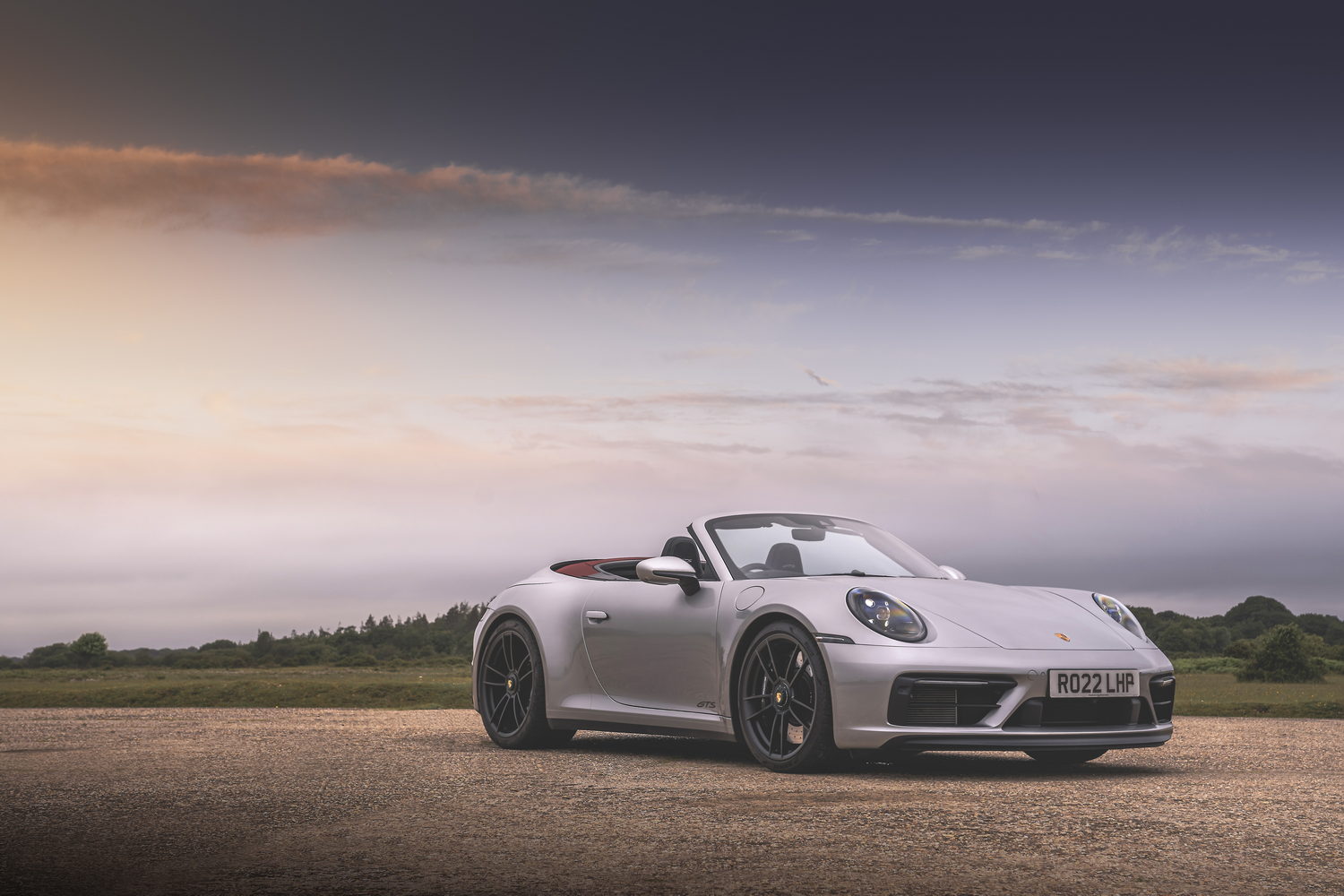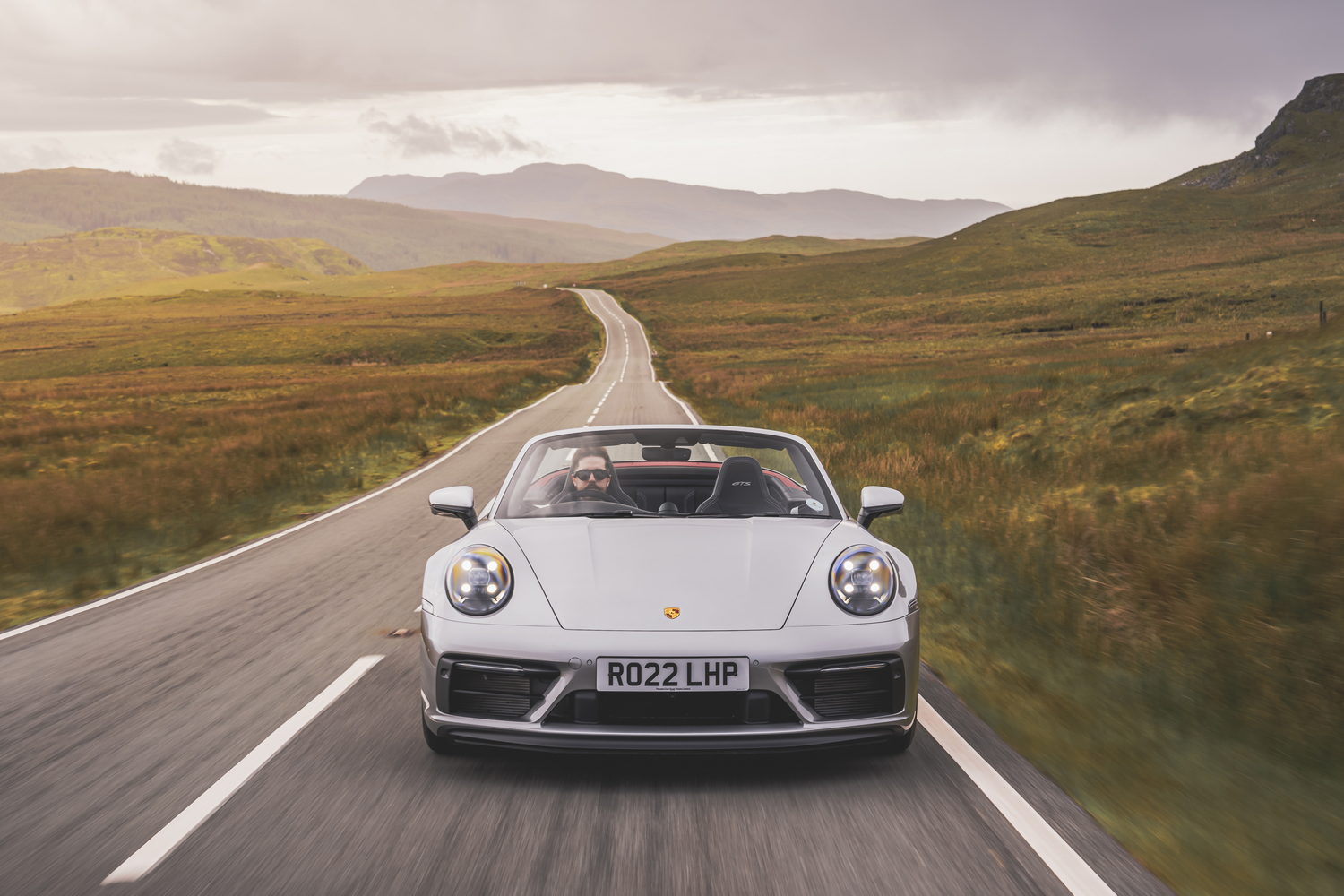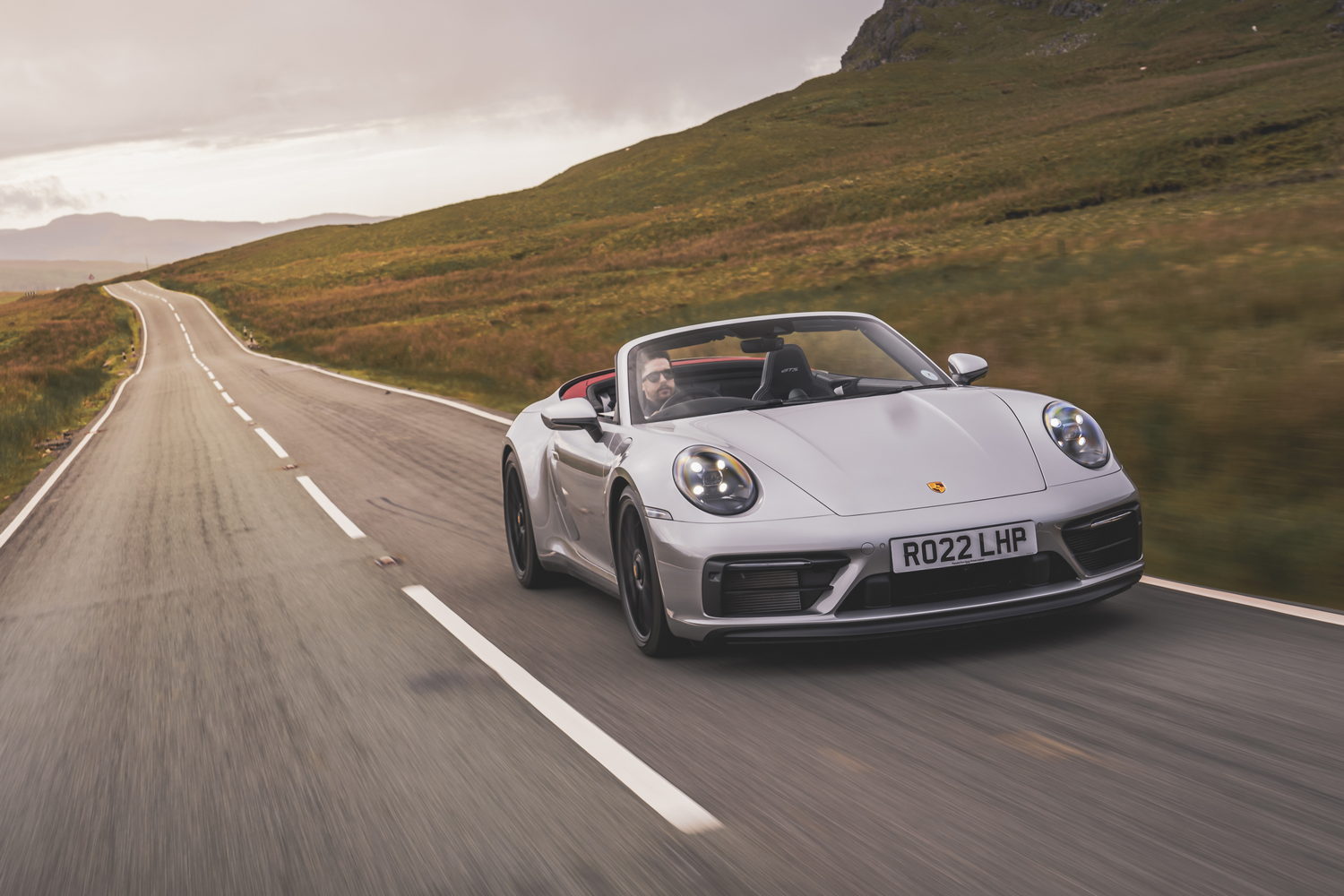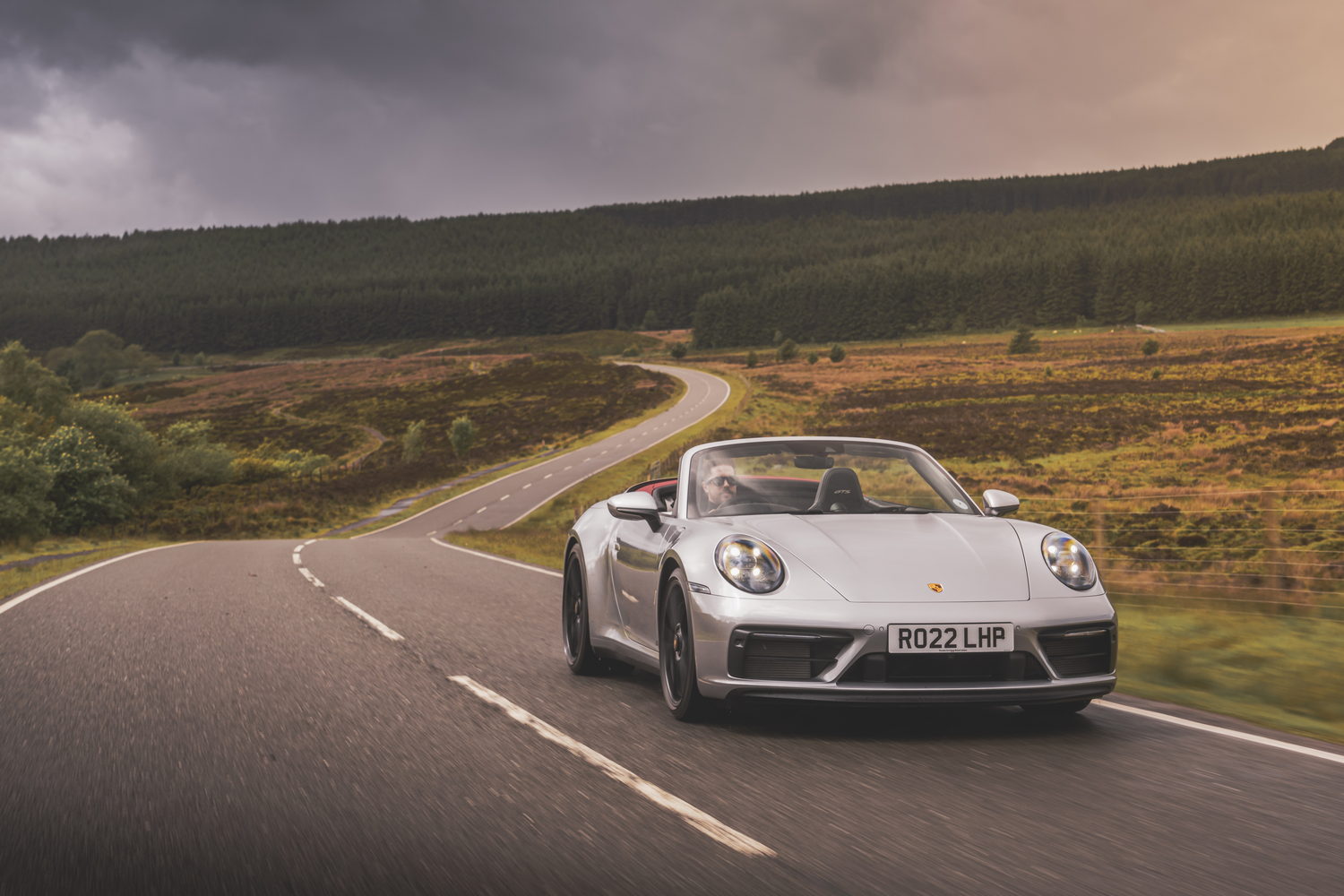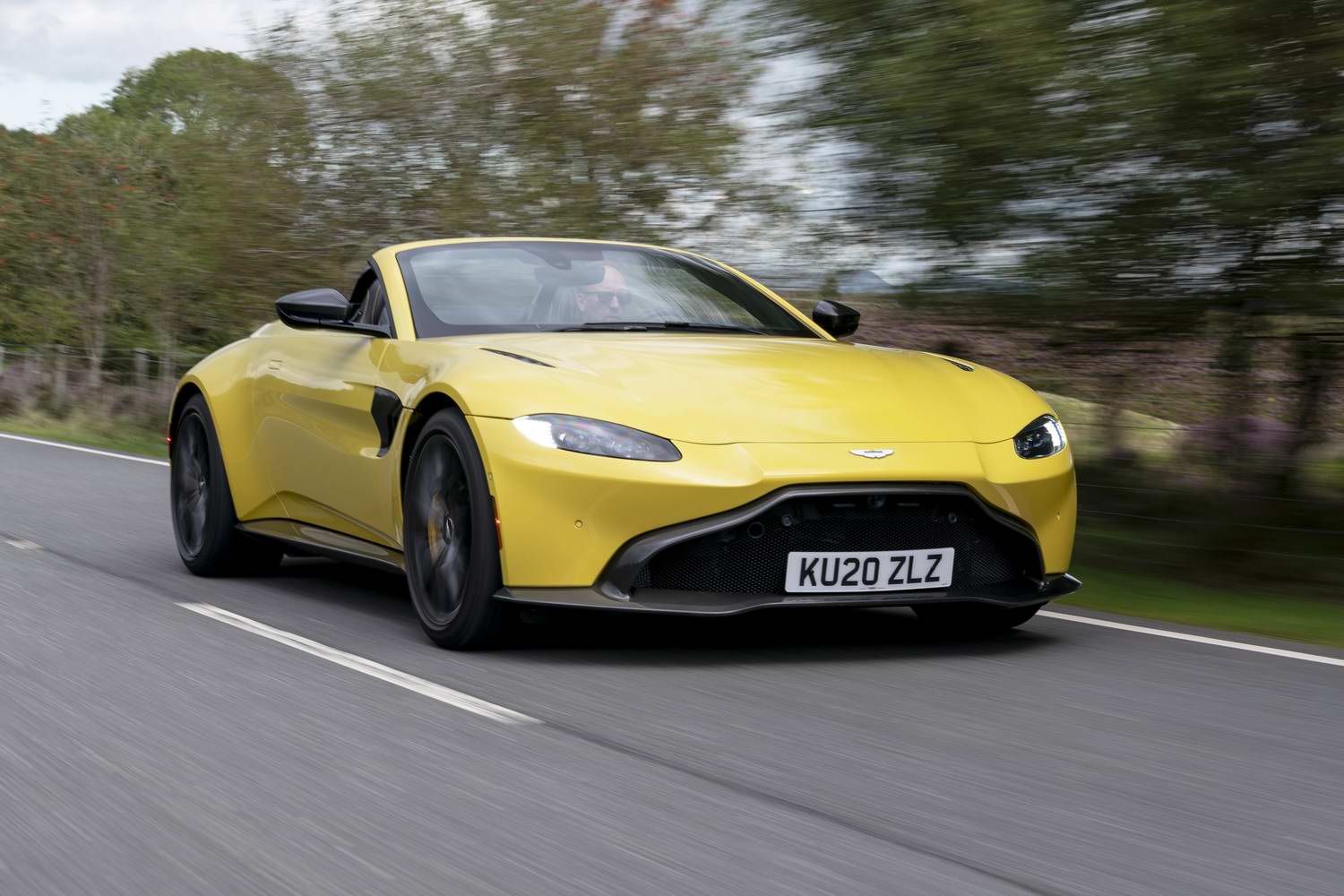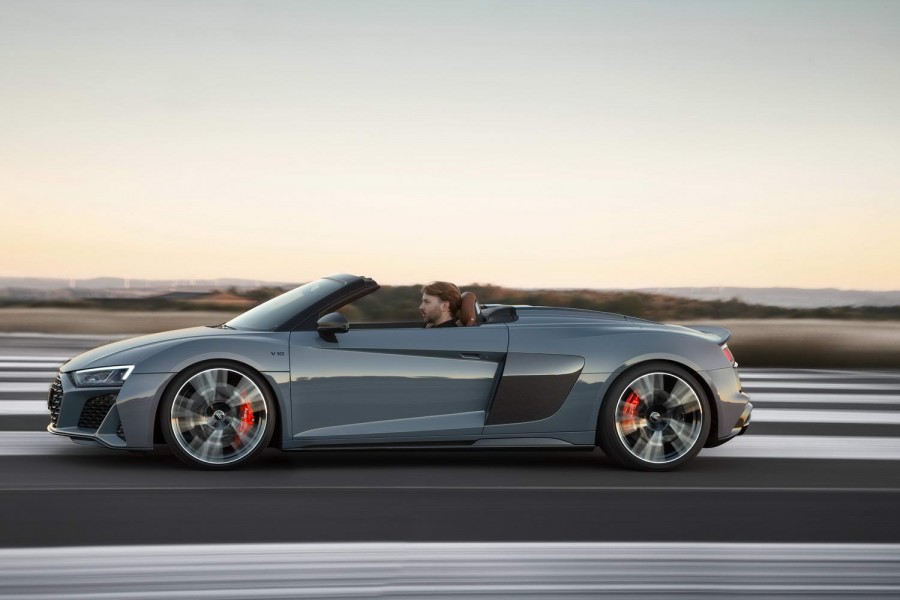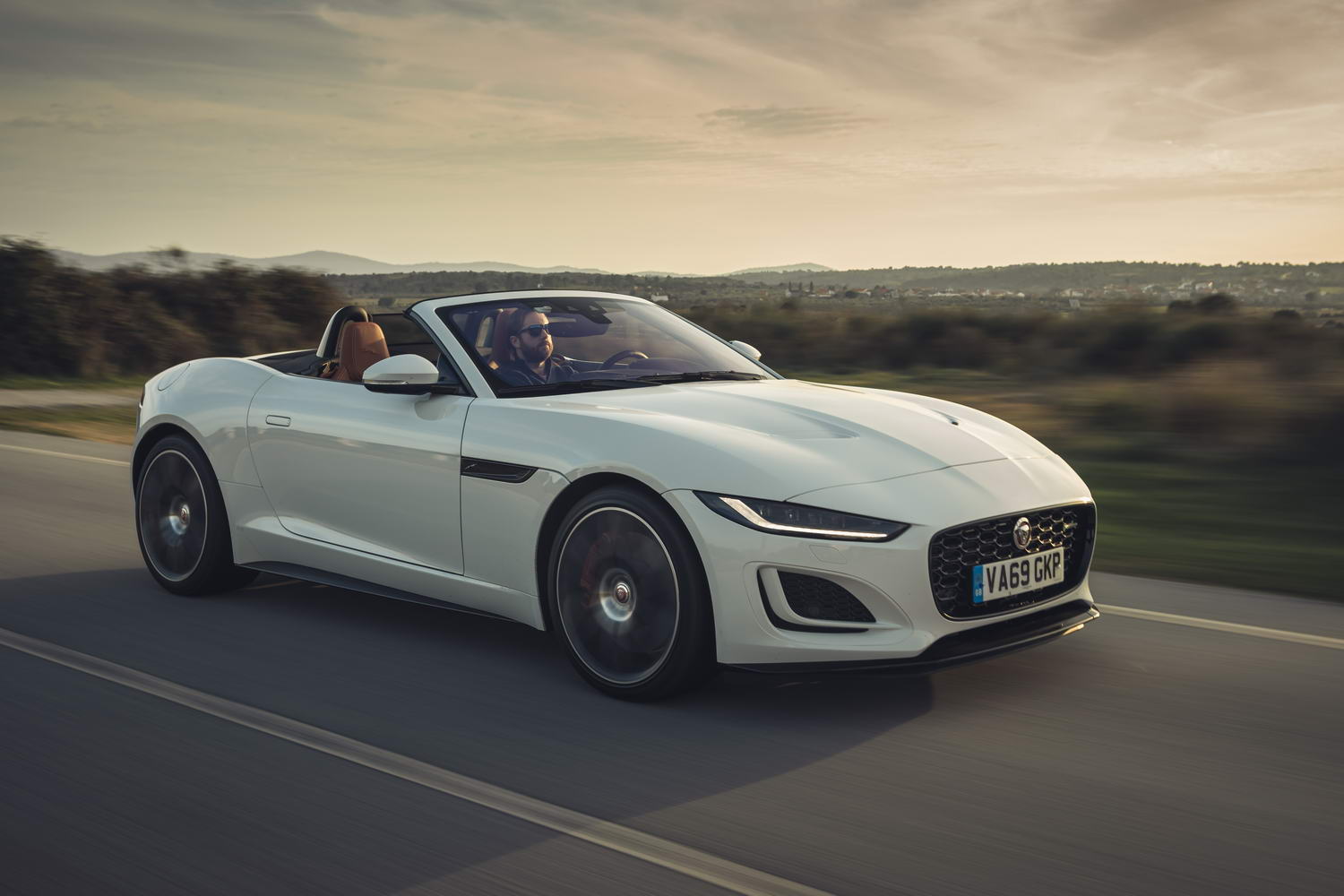The Porsche 911 range is large and complex, and that's before you even consider the differing body types. Should you have a coupe or a convertible, and should that convertible be a Cabriolet or a Targa? We've already tried the 911 Cabriolet in 4S form, and we came away impressed, but this is the slightly more focused GTS model - a version we haven't really warmed to in coupe guise. Will removing the roof convince us of its merits?
In the metal
To our eyes, the 911 Cabriolet has always looked a bit strange. The packaging associated with a folding fabric roof and a rear-mounted engine is tricky, so there's an air of the hunchback about the drop-top 911 when the roof is down. When it's in place, however, the 911 looks every inch the sports car, with its low and wide stance.
And of course, because this is the GTS version, designed to sit somewhere between the already-sporty Carreras and the properly hardcore GT3 models, there are a few more performance-orientated extras included as standard. Chief among these is the Sport Design package, which includes sportier bumpers than the standard Carrera S, along with the black trim on the front spoiler and the rear lid grille.
What's more, there's a sports exhaust system with black chrome plating and there's black lettering on the badges, as well as darkened headlight rims. Then there are the standard satin black alloy wheels. A gloss exterior package is available as an option, too, with high-gloss black body details and features.
Porsche has made changes to the interior, as well, with a GT sports steering wheel included as standard and the Sport Chrono package, which includes a mode selector on the steering wheel. As standard, the GTS also comes with four-way electrically adjustable sports seats, although these only come with manual fore-and-aft adjustment, which feels a bit miserly in a €240,000 car.
That said, there are some snazzier standard features, including extensive use of Race-Tex suede upholstery and contrast stitching in either Carmine Red or Crayon (a sort of light grey). Whichever colour you choose is replicated on the seatbelts and the rev counter, as well as the Sport Chrono clock. Finally, the image is completed by the Carbon matt decorative inserts on the dashboard, centre console and door trim.
Aside from all that, though, the GTS feels much like any other 911 Cabriolet, which means the quality is staggering, both in terms of materials and solidity. Somehow, Porsche has managed to make its cars feel almost as though they are hewn from a single lump, rather than constructed from loads of components. Admittedly, the cabin design isn't especially inspiring, but there's no arguing with the quality.
New 911 GTS models also get Porsche's latest touchscreen infotainment, which is an improvement on the old systems. With fewer fiddly menus and a more contemporary look and feel, it's sharper and crisper than before, and it also comes with the Android Auto smartphone integration tech, which is a relatively new addition to the Porsche range.
Of course, the 911 Cabriolet isn't the most spacious car on the market, but it's more or less on a par with its closest rivals. Where some wouldn't bother with rear seats, the Porsche does at least pay lip service to practicality with a cramped rear pew. You can't really put adults back there, particularly with the roof up, but you can use it as a glorified parcel shelf. And because of the way the electrically operated wind deflector works, you can still use it for luggage when the roof is down.
That's useful because there really isn't that much space in the luggage bay. The 132-litre space is located between the front wheels and, though it's a deep compartment, it isn't particularly roomy. Pop some soft holdalls in there and you should have enough luggage for a weekend away, but for any longer you'll have to pack light.
Driving it
What really sets the GTS models apart from their siblings is the engine, which is a tuned version of the 3.0-litre flat-six found in the basic Carreras. So while the 911 gets 385hp as standard and the S produces 450hp, the GTS versions get 480hp. To transmit this power to the road, customers get a choice of manual or automatic gearboxes, and rear- or all-wheel drive. We're testing the standard rear-drive car (all-wheel-drive versions use the 'Carrera 4 GTS' designation) with the eight-speed PDK automatic gearbox here.
What that means is a 0-100km/h time of 3.6 seconds, which is a tenth slower than the all-wheel-drive car but two tenths faster than the 4S Cabriolet. Compared with the equivalent GTS Coupe, though, the Cabriolet comes with a two-tenths-of-a-second penalty. It's 2km/h slower at full chat, too, but that isn't going to make much difference as few customers will ever get too close to the 309km/h maximum.
Whichever way you cut it, the GTS is exceptionally rapid, and it has the soundtrack to match. Porsche has cut out some of the soundproofing, and the sport exhaust is fitted as standard, which gives it a really satisfying snarl when you put your foot down. Obviously, it's less visceral than a GT3, but it still has plenty of sporting intent, particularly in Sport or Sport Plus modes where the car holds gears for longer and the exhaust pops and crackles on the overrun.
And that's exactly the role the GTS is designed to fulfil, slotting into the range between the 'cooking' Carrera models and the hardcore GT3. As a result, the GTS has half an eye on track use, as well as more enthusiastic road driving, and that has meant striking a balance between ride and handling. It's a tightrope Porsche has struggled to walk, and the GTS is a little bit too firm for road use in Ireland. At low speeds, the ride is borderline unacceptable, with big thumps over potholes and uncomfortable jiggles over smaller imperfections. Higher speeds are more comfortable, but it's still as stiff as most supercars. And that's before you select the stiffer suspension setting, which is really only tolerable on smooth roads or race tracks.
The advantage of this stiffness is, of course, body control, and the GTS is a fabulous car to drive quickly. The steering is sublime, the pedal weight is ideal and the PDK gearbox is sharp and snappy, making DIY shifts a pleasure. Then there's the inherent balance of the 911 platform, which has created some of the most intuitive and exciting sports cars on the market, despite the 'wrongness' of putting the engine at the back of the car.
Nevertheless, the GTS feels precise and stable, helped by the fact it sits 10mm lower than a standard Carrera, and the grip from those tyres is immense. Even without all-wheel drive, the car doesn't squirm under acceleration and there's no sense of the back trying to overtake the front at every opportunity. Naturally, the 4 GTS will be more stable in the wet, but the standard car is just as planted in the dry.
And this Cabriolet version doesn't seem adversely affected by the lack of a roof. There's no immediately obvious difference between the Coupe and the convertible, except for the slight increase in noise. And it is only slight, because the 911's cabin is quite sheltered even when the roof is tucked away, especially with the wind deflector in place. Ensure that's erected and you can easily cruise along at motorway speeds without putting the roof up.
What you get for your money
At nigh on a quarter of a million euros, the 911 Carrera GTS Cabriolet is considerably more expensive than the 4S model that sits beneath it in the range. Although it only has an extra 30hp and it does without all-wheel drive as standard, the GTS commands a premium of around €15,000. Not that we expect that to bother 911 buyers very much.
Those who do splash the cash on a new 911, however, might get an unpleasant surprise when it comes to standard equipment. You miss out on fully-electric seat adjustment, for example, while adaptive cruise control is a €2,500 option. In terms of extras over the 4S, everything is either performance- or styling-orientated. Once you've got the car you want, you're looking at spending well over €250,000.
Summary
We remain somewhat unconvinced by the GTS trim level in modern '992'-generation 911s because it's just too firm for road use. Unless you're going on a track, you'll be better off with a Carrera S or a Turbo of some description, and if you are going on track you'll probably want a coupe anyway.
All that said, and no matter which version you choose, the Porsche 911 Cabriolet is one of the best drop-top sports cars in the world. There are good reasons for that, and even the stiff ride of the GTS can't mask the 911's brilliance. Few other cars can handle with such precision while offering the same premium cabin quality. Even in GTS form, it's fantastic.

